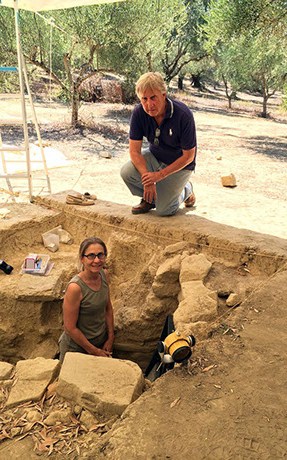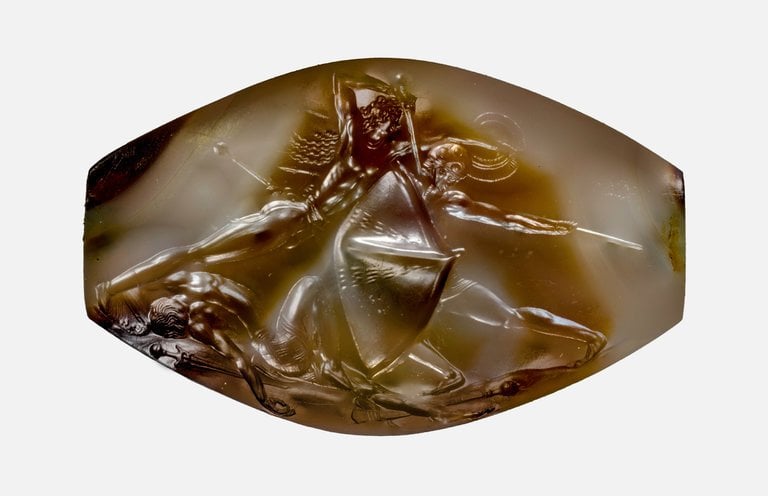The spectacular archaeological discovery of the so-called “Griffin warrior”—who got his name from two items inside the tomb depicting a griffin—has once again made international headlines following a facial reconstruction carried out recently by Lynne Schepartz and Tobias Houlton of Witwatersrand University in Johannesburg.
The mysterious warrior – who was most probably a powerful man – appears to have had long black hair, a square jaw and a powerful neck; at the time of his death, he must have been 30 to 35 years old.

The story goes back to 2015, when two University of Cincinnati scholars, Jack Davis and Sharon Stocker, renewed excavations at the ancient city of Pylos near the site of the “Palace of Nestor”, under the auspices of the American School of Classical Studies in Athens, with the permission of the Ministry of Culture in Greece. As a result, they discovered the grave of a Bronze Age warrior in southwestern Greece, filled with more than 1,400 objects: jewels, weapons and armour, as well as bronze, silver and gold vessels.
The gravesite is considered to be one of the richest to have been found in Greece in the last half-century for the wealth of its find and its potential to shed light on a dramatic historical process: the extension of the Minoan culture of Crete to southern Greece, where it formed the basis of Mycenaean civilization, the first in mainland Europe. The Greek Ministry of Culture has characterized this finding as the “most remarkable demonstration of prehistoric wealth in grave monuments found in the last 65 years in the country’s mainland”.
The new genetic study indicates that southern Greece’s Bronze Age population arose from a mix of local people and people who migrated to the region from Eastern Europe some 5,000 years ago. The Griffin Warrior was also determined to have been a member of this local population. Some scholars have suggested that he might have been a member of an invading force.

